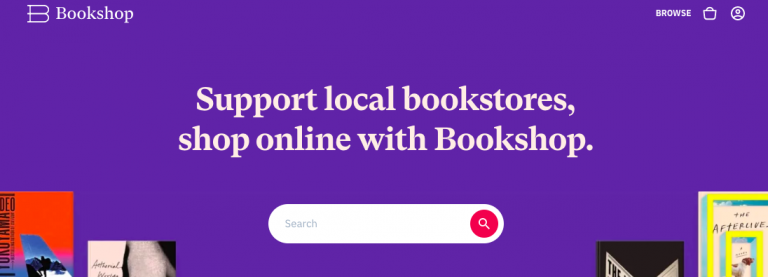The weekend is coming! The weekend is coming! And while that news alone is a source of joy and wonder, it’s doubly so this weekend because Saturday is Independent Bookstore Day!
Where will you visit and what will you buy? If you’re in the Minneapolis area, you might try The Wild Rumpus for a belated copy of The Country Bunny and the Little Gold Shoes, or maybe the Red Balloon in anticipation of the newest Wings of Fire? How about Birchbark for Killers of the Flower Moon, or Once Upon a Crime for the creepy classic, Rebecca? Or maybe you’ll head to Magers and Quinn for a newer classic, The Great Believers?
Or maybe you’re working, or digging in the (muddy [snowy?]) dirt, or riding the bleachers at a child’s doubleheader. If you can’t get out and about in your neighborhood, there’s always the internet’s busy streets. Specifically, you might try Belt Publishing for the Minneapolis-superfan’s Under Purple Skies.
Buying independent is an excellent way to make manifest your belief in the restorative value of books and the invigorating power of independent bookstores.
It’s true that books are expensive and can be borrowed—for free—from the library (libraries!). But good books are forever: You read them once or twice or more. You read them aloud to those you love. You lend them to those you trust. You gush over them with acquaintances and hate on them with strangers. You revisit the phrases, the characters, the scenes, the stories—and the images and feelings they invoke—over the years of your life. And good books make those years so much better.
And bad books? They’re the worst. But even bad books deserve a second life in more appreciative hands. So sell back A Little Life and The Flamethrowers to the used bookstore, and try to remember that the books we hate also give us something to think over and question, and that’s a lot.
Find your Minnesota-specific guide to Independent Bookstore Day at Rain Taxi or Twin Cities Geek. And reserve Saturday for spending money on the booksellers, bookstores, book publishers, book printers, and, of course, the authors that entertain, educate, delight, and, sometimes, astound us.
- Is not written by the author
- Is written by an expert in the field
- Is about the book’s larger subject and lends credibility to the book and the author
A foreword is an asset to most nonfiction books. Luckily, many nonfiction writers have a network of informed experts (a few of whom probably informed the writer’s source material) who can speak fluently about the writer’s subject matter (and sometimes the writer, too). When to solicit the foreword? Brainstorm possible writers early in the book development process (and when you ask, be sure not to waste anyone’s time).
A preface:
- Is written by the author
- Is only peripherally about the book’s subject
- Is often written to explain how and why an author came to write their book
A preface is often an asset to a nonfiction book. It is pretextual in the sense that it isn’t considered of a piece with the content. It can therefore act as a space where authors, freer to appeal directly to their readers, use candid language to make the book’s content more meaningful and the reading experience more intimate. When to write the preface? Write it when you’re done. In some ways, the preface is a preparatory reflection, and it’s often more efficient to write it while looking back.
An introduction:
- Is also written by the author
- Is typically about the book’s subject
- Is used to supply extra material that augments the book’s subject
An introduction can also be an asset to a nonfiction book. Unlike a preface, an introduction is considered a part of the book. It’s thus a good place for background material that is crucial to consider but that doesn’t fit the book’s narrative arc. When to write an introduction? Write it when you’re done. It’s not always easy to identify whether or not a book needs an introduction. Once the manuscript is complete, it’s easier to determine what has been left out. If the reader will benefit from contextual information, an introduction will help.
An afterword:
- Is not typically written by the author
- Is very like a foreword
- Is used to guide the broader discussion provoked by the book
An afterword is a bit rarer than the other textual frames. Why? Who knows, but maybe out of an assumption that readers will skip out on a book’s last pages? Whatever the reason, an afterword can offer an unexpected and powerful lens through which to view nonfiction (or fiction!) work. When to solicit an afterword? Probably after your book has been released, reprinted, and widely respected. The best afterword discusses a book’s lasting impact on the cultural conversation to which it continues to contribute.











